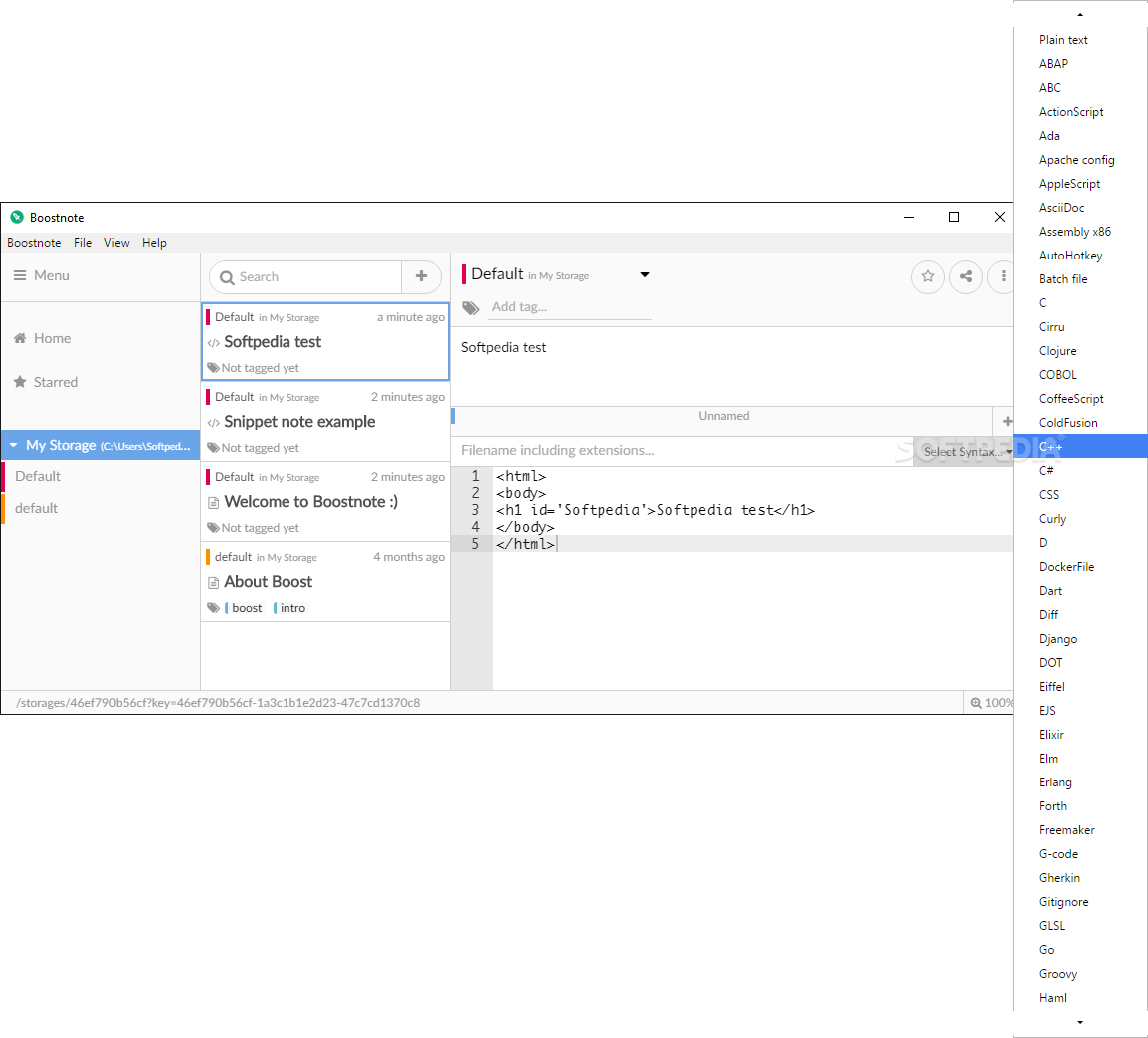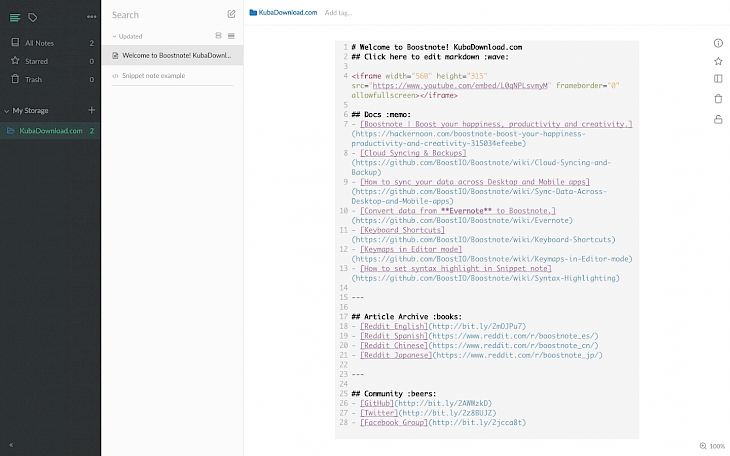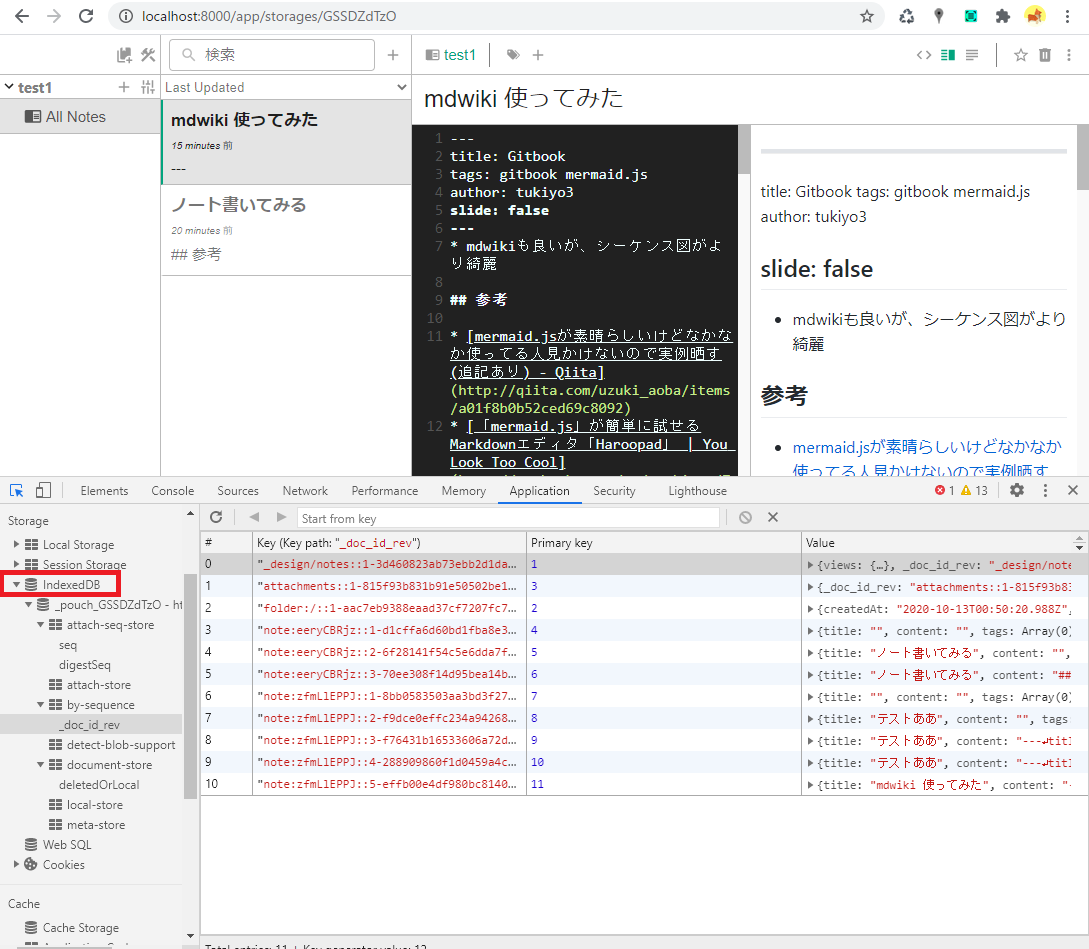

On Windows, you’ll need to install a software like Putty Then go into Network options > Wi-Fi and follow the setup wizardįinally, I recommend starting the SSH service and use it to finish the installation:

#BOOSTNOTE NEXTCLOUD DOWNLOAD#
Click on the RPi folder and download the image file on your computer (ex: NextCloudPi_RPi_2).There are two versions available: RPi or RPi_BerryBoot Download the Raspberry Pi version of NextCloudPi from the OwnYourBits server.The first thing to do is to download the latest version of NextCloudPi for the installation : You can always install other things after, as it’s a classic Raspbian Lite distribution. It’s the perfect method of you want to try NextCloud or use a Raspberry Pi mainly for this.

You can check the NextCloudPi website here for more information. So it’s easy to get started with NextCloudPi. NextCloudPi is a custom image of Raspbian Lite, with NextCloud and all the dependencies preinstalled on it. NextCloud installation The easiest way: Install NextCloudPi What is NextCloudPi?
#BOOSTNOTE NEXTCLOUD CODE#
On the official website, you can also find appliances for specific needs : Virtual Machine, Docker image or Snap package.įor Raspberry Pi, we’ll use the source code and the NextCloudPi image, a custom Raspbian image to simplify the NextCloud installation.ĭocker can also be another solution if you want to try (docker pull NextCloud), I didn’t test it. They are using web languages like PHP and JavaScript, so it’s easy to install on any device. NextCloud technologyĪs many of the open-source apps out there, NextCloud code is available on GitHub. To check the apps available before installing NextCloud, you can check the NextCloud Apps store here. You can download and install extensions (or “Apps”) to add new features from the community.įor example, I’m using the “Passwords” extension to store my passwords safely on my network. It’s already a good tool, but that’s not all 🙂 Some integration is possible (calendar, mail, LDAP …).Desktop and mobile clients for automatic synchronization.

NextCloud offer many features as soon as you install it: You can install NextCloud on many platforms, including Linux and therefore the Raspberry Pi. You may also know OwnCloud, it’s the same thing (it’s even the same developer). You probably know Dropbox or Google Drive.īasically, the goal of NextCloud is to offer the same thing, but keeping the control of data on your server. If you are lost in all these new words and abbreviations, request my free Raspberry Pi glossary here (PDF format)!


 0 kommentar(er)
0 kommentar(er)
